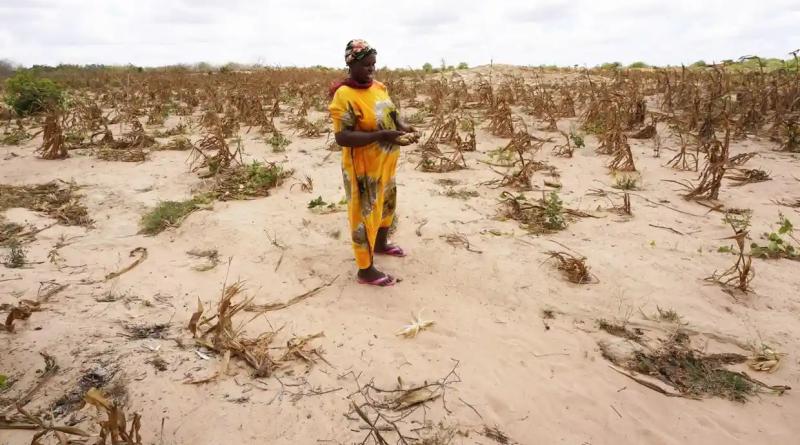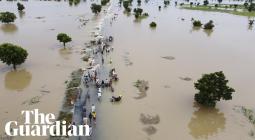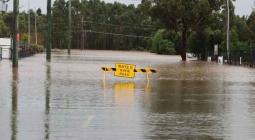Climate crisis funds not reaching countries in need, senior UN official says

With famine in Somalia almost inevitable, Martin Griffiths criticises opaque handling of $100bn a year promised to poorer countries
The UN’s humanitarian chief has questioned why billions of dollars pledged to tackle the climate crisis have not been used to fight famine in Somalia.
Martin Griffiths said he did not know where the promised $100bn (£87bn) a year to fight the impact of global heating in poorer countries had gone, and called for greater transparency around climate finance.
“The truth of the matter is that we are scrambling to try to understand where the climate money is that was promised a decade ago. Where is it? Who’s holding it and who is not delivering it to places like Somalia?” said Griffiths, the UN’s undersecretary-general for humanitarian affairs and emergency relief coordinator.
“Somalis are the victims of our behaviour, the victims of our habits – not of theirs. And yet we haven’t even managed to get to them the money that we pledged nobly some time ago for exactly this kind of purpose.”
The UN has warned that a state of famine is likely to be declared in areas of Somalia by the end of the year as the country continues to struggle with drought and flare-ups of conflict.
Griffiths said he had “failed” to get an answer when he asked governments how climate financing was decided and delivered.
Griffiths’ criticism of the opaque financing system adds to growing calls from African countries and campaigners for greater transparency and easier access to the promised money.
At the UN climate change conference in 2009, rich countries pledged to give low-income states $100bn a year by 2020 to mitigate and adapt to the climate crisis. The Green Climate Fund was created as a way to deliver the money, but has had limited impact because rich countries often channel their financing through the World Bank or regional development banks.
According to the Organisation for Economic Co-operation and Development, which monitors donor contributions to climate financing, developed countries mobilised $83bn in 2020. Low-income countries received 8% of the money between 2016 and 2020.
However, last week Oxfam said the figure mobilised by developed countries was between $21bn and $24.5bn and that only a fifth of that made it to less-developed countries. The charity said loans make up more than 70% of climate financing.
Prof Lee White, Gabon’s environment and climate change minister, said the system was flawed. Donor countries self-report contributions and there is no clear way to trace how much money has been donated and where it has been spent, he said.
He said only a fraction of the money that rich countries say they have provided reaches the Green Climate Fund and even then applications for money come with overcomplicated criteria.
“Few developing countries have the capacity to write bankable projects, and there are so many clumsy procedures even if you get money, it often feels that the system is designed to prevent you spending the funds on anything other than developed-nation consultants,” he said.
Kevin Watkins, a former executive director of the Overseas Development Institute, said climate and development aid needed to be integrated.
“We have a development finance system which is deeply siloed and which is somewhat competitive, with big agencies scrambling for the same pot of money, which is badly coordinated, and which, in all honesty, is failing to address the real climate risk challenges for countries at the sharp end of the crisis,” he said.
“The problem that needs to be addressed is essentially related to poverty and limited capacity to manage climate-related risk. It’s not catastrophic events – it’s delayed rainfall, higher levels of evaporation, the weakness of the water infrastructure. The idea that you can sort of parcel this up into climate finance and non-climate finance is, in my view, at the heart of the problem.”
He said Somalia was an example of low-income countries – especially those experiencing conflict – being forced to rely on dwindling humanitarian aid when they had already entered a state of crisis instead of having earlier interventions that could have solved root problems.
Griffiths said climate funding could have been used to dig wells and support livelihoods in the worst-affected areas of Somalia.
Griffiths said it was “unequivocally certain” that famine conditions were present in Somalia.
Somalia’s presidential envoy for drought response, Abdirahman Abdishakur Warsame, said in a recent interview with the Guardian that the international community was failing Somalia. “Millions of children are malnourished, many will die, and we don’t have one penny of that climate fund,” he said.
Ministers from Egypt and the Democratic Republic of Congo have called on developed countries to honour the $100bn pledge and prioritise climate financing at the Cop27 summit next month.
COVER PHOTO: Rich countries pledged at a UN summit in 2009 to give low-income states $100bn a year by 2020 to mitigate and adapt to the climate crisis. Photograph: Dong Jianghui/Xinhua/Alamy





